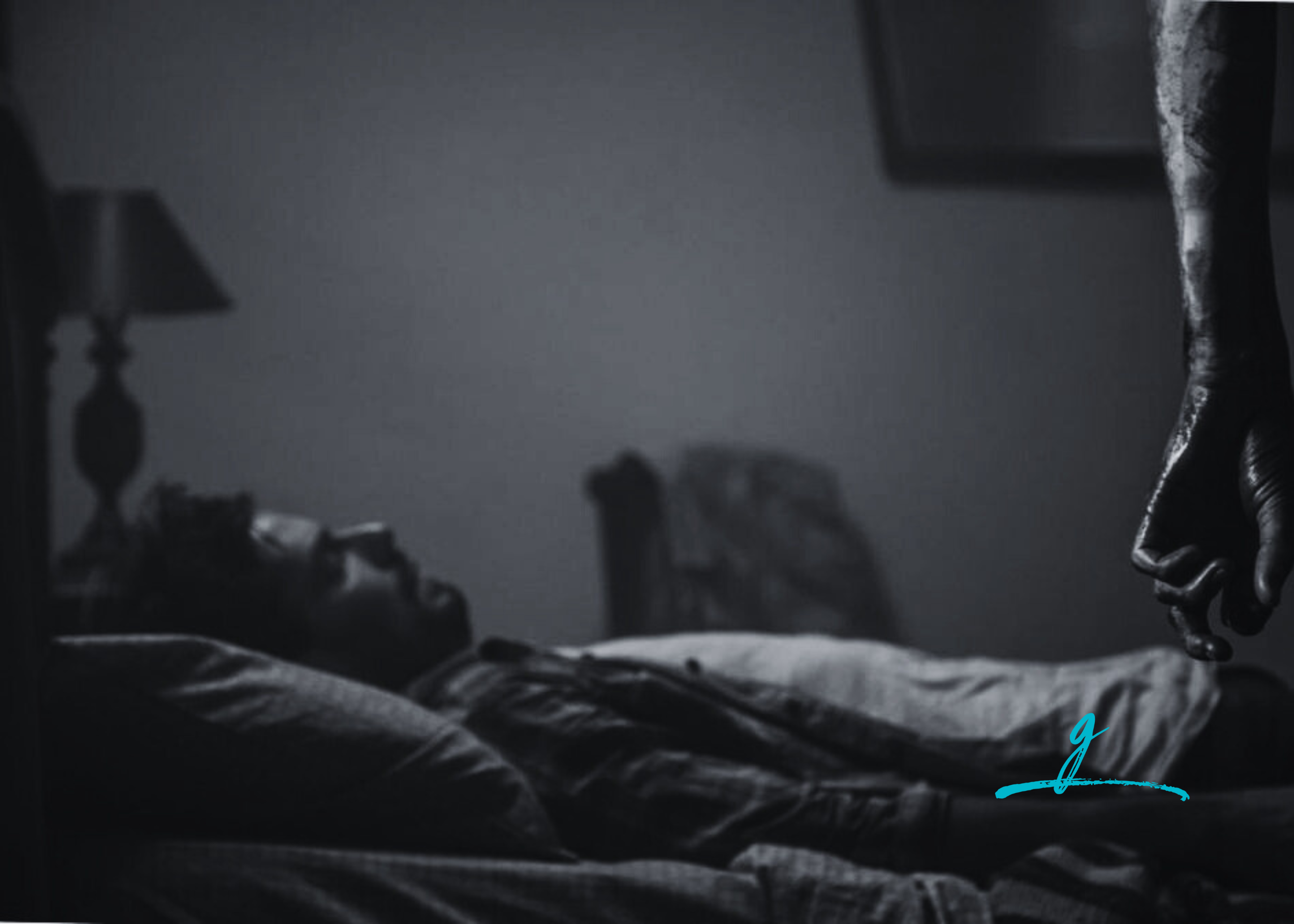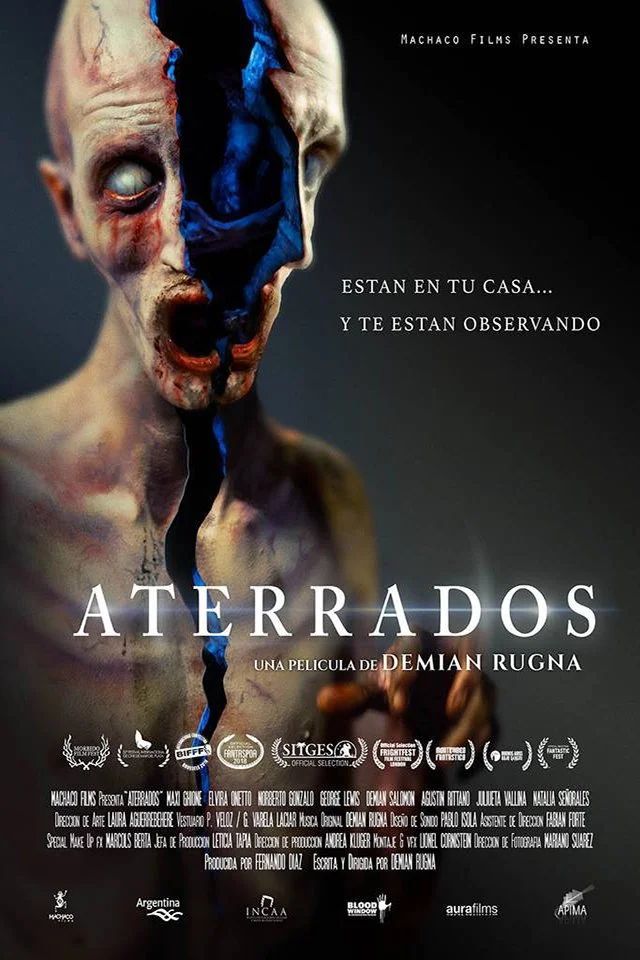The Benefit of Embracing Belief
With shorter run times, horror movies still clock in closer to 90 minutes on average than the bloated run times seen in other genres lately, there is literally less time to devote to all aspects of storytelling. And one of my least favourite plotlines is devoting half a movie to characters denying the obvious.
I mean, yes, bodies keep disappearing from freshly dug graves, pale people with sharp incisors appear at night and attempt to bite our necks – but it cannot possibly be vampires…they don’t exist!
It can be maddening, and fun, for a short while, to observe characters struggling to accept the reality they see with their own eyes.
After half the film has passed and they still are floating down the river denial, it becomes a frustrating distraction when we just want to get on with it.
The horror genre does need some mental resistors of course.
The useful idiot
Meet Scott. He’s a glass half full kinda guy.
If we had an encyclopedia entry for ‘Useful Idiot’ it would include a picture of Scott (The Evil Dead, 1981). Who else could experience a few hours of strange occurrences, clamber down into the cellar with Ash to discover a book so clearly mysterious as the Naturom Demonto, AKA the Necro-freaking-nomicon, and think “you know what is a great idea, opening this sucker up and reading it aloud”?
Despite the ridiculous choice these characters make, we go along with it because without them, there would be no movie.
The useless idiot
We also need a handful of useless idiots in the film.
Usually side characters, these are the people who continue to make poor decisions even after they are in the thick of a terrifying situation. These are the girls who run into the basement instead of out the front door. The brainiac guy who thinks splitting up is the best the decision for the group.
Narrator: It is the best the decision if your goal is to pick them off, one by one now that they are more vulnerable.
Bonus points to the filmmakers who write those characters as the most obnoxious of the group, ensuring a little collective cheer from the audience when they meet their demise.
To be fair, a little resistance in the face of the unknown is understandable and relatable. If I were in the early stages of a horror film, I too would be dismissive. It isn’t healthy to hear the howling of the wind on a chilly, November evening and immediately believe it is caused by demonic spirits.
Though, if I were to experience several unexplainable events in a short time period, and then hear voices whispering “join us” when I entered a house, I’m confident I would open myself up to a little belief in the supernatural. And the get the hell out of there.
Several of my favourite films include protagonists readily accepting what is happening, and saving their energy for the fight ahead. It shifts the narrative, and drives a different level of excitement. The reason, for me, comes down to mathematics: carving precious minutes away from character infighting and dedicating that time to unleash creativity.
Within the last six years, Argentinian writer/director Demián Rugna has given us two prime examples, Terrified and When Evil Lurks, to demonstrate the creative decisions realized when characters don’t waste time arguing the obvious in a feature film. These two films give us unique representations of the supernatural and genuinely creative imagery that stick with us. Moments we’ve not seen onscreen before – or at least, moments I’ve never seen before.
Aterrados (Terrified, 2017)
It has become commonplace to give the audience a jump scare immediately. The entirely predictable nature of these opening sequences leave me yearning for the steady pacing of a slow burn. Unless that opening sequence is from Terrified.
As we follow Clara around her house, trying to uncover where those noises are coming from, we might guess at the result of her investigation - it is a horror film after all. What we cannot imagine is how it will happen.
I think it is one of the best horror opening sequences in the last decade. It is patient and atmospheric. It includes the fake out moment we’ve come to expect, the distraction. Watching the shocking climax of that sequence for the first time, I remember feeling astonished. I thought I’d just seen the best the film could possibly offer.
Imagine my delight at being proved wrong.
With only 87 minutes of run time, Terrified manages to weave three stories together into one cohesive and inventive tale. To make room for these plotlines, to develop characters, deliver nuance and crystalize new conceptualizations in the genre, our mathematical calculation takes place.
Remove the second-guessing.
The protagonist, a police commissioner in Buenos Aries, doesn’t waste precious time disbelieving what he sees with his own eyes. Being a cop with his years of experience, he is nearing retirement, well, he’s seen things before. Not only does he grasp the severity of the situation – he knows a guy!
Between his decisive acceptance and his position of power, he can easily remove bystanders and residents as needed, the protagonist jettisons the story forward, allowing the audience to be treated to a truly original depiction of supernatural events.
Not satisfied with the usual possessed child or haunted house, Rugna presents an afflicted neighbourhood, the latest in a series of similar occurrences the film’s experts have documented. The nature of the supernatural interactions clash with our expectations. Seeing the opening sequence, and the jump scare that shortly follows it, doesn’t prepare you for the utter patience with which one of the best scenes is served up. Eight minutes of drip-fed tension, nearly 10% of the film, is given over to a wonderful slow burn with an image that will stay with you.
Cuando acecha la maldad (When Evil Lurks, 2023)
If I asked you to describe possession, specifically what a possessed person looks like onscreen, your influences are likely formed by The Exorcist, even if you’ve never seen it. The depiction of Linda Blair’s appearance became the template for generations of filmmakers to follow. The jaundiced skin, greasy hair, sunken eyes. The other image you may see is that of a teenager, levitating off the ground or above their bed, eyes rolled back and their body grotesquely twisted.
What you wouldn’t picture, even if I gave you five guesses, is manner in which the early stages of possession physically manifest in When Evil Lurks. I have never seen possession represented this way and it is one of my go-to subgenres.
At first sight, our protagonist buys in. In the beginning, what is so refreshing is those around him who dismiss the possibility of possession don’t do so because they disbelieve, they just aren’t convinced this is a true case. The population of the town not only know things like this can happen, ‘the rotten’ is their term for possessions, they have protocols in place at the municipal level for how to proceed in case of an infection.
They have actual guidelines to follow!
Mind you, had the protocols been followed properly, the movie would be over in five minutes. For this film, we have a wonderful bending of the Useful Idiot trope. A person who knows better and still makes the wrong choices. Other characters believe in the possibility of the supernatural, but dismiss this situation because they feel their belief is being used against them. As a means of scaring them away to appropriate their land or used to justify breaking a restraining order.
Time saved on disavowing what we know to be true, is instead, filled with creative re-imaginings (what purpose does possession serve?) and stunning visual sequences.
You know my feelings regarding extremity in the horror genre. It’s a firm ‘no thank you’. Creative kills? That is a whole different matter. By all means, come on in, have a seat and let’s see what you’ve got to offer.
I have no idea how the filmmaker pulls this off.
There are two specific scenes where, within a few frames, Rugna makes it entirely obvious what is going to happen and who it is going to happen to. And yet, the way he presents it onscreen still caught me off guard. In the first instance, a scene takes surprisingly longer to unfold than I expected, and, (how can I say this delicately?) requires more effort than expected.
The other creative kill that stands out for me is best explained by my thought process watching it.
“Okay, so this is going to happen.
How on earth are they going to show that?
Oh, they’re not.
Probably for the best to just allude to it, that would be pretty bloody shocking to show onscr- holy sh*t they did it!”
And that, ladies and gentlemen, is how you get played by someone who knows their audience.
What I appreciate about Rugna’s storytelling in these films is the acceptance of the events unfolding before our protagonist’s eyes isn’t presented in a demeaning way.
These films don’t rely on depicting rural populations as backwards habitations, cut off from the rest of the world. Terrified takes place in a suburban Buenos Aries neighbourhood. When Evil Lurks begins on the outskirts of a town but alternates between the populous residential areas in town as the film progresses.
Identifying the presence of the supernatural is just step one of the many things that must be dealt with by the protagonists, with no time to waste on debate, and to the absolute benefit of audiences looking for something refreshingly different.
Enjoyed this story? Support my writing here, share with your network or subscribe below to receive your weekly update directly to your inbox.




